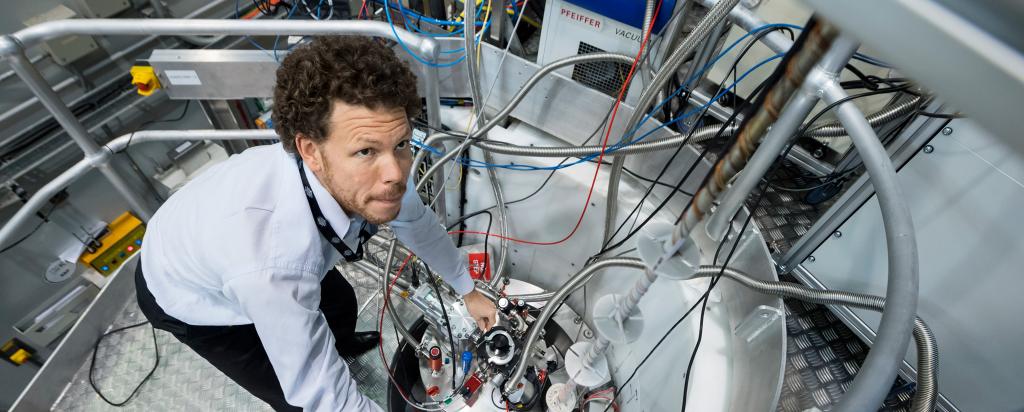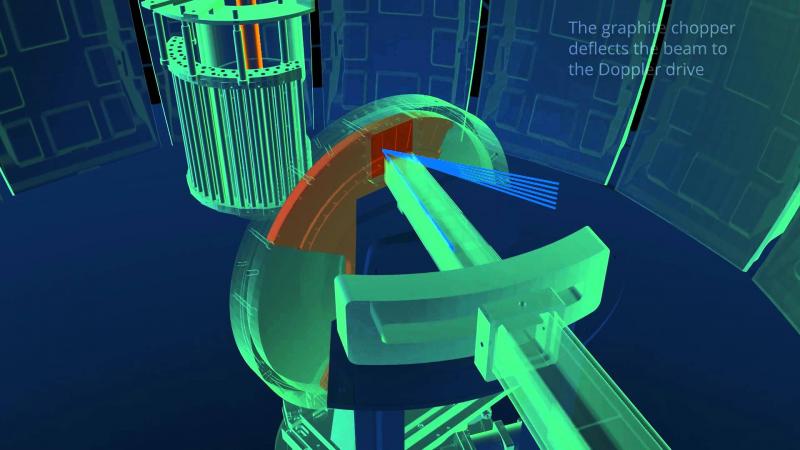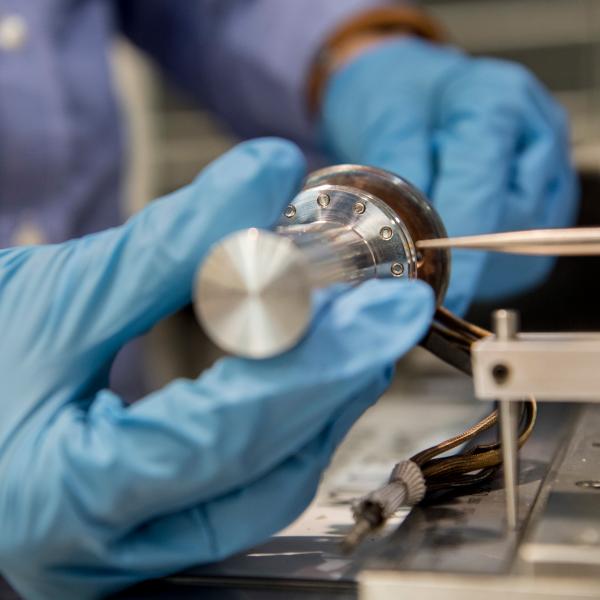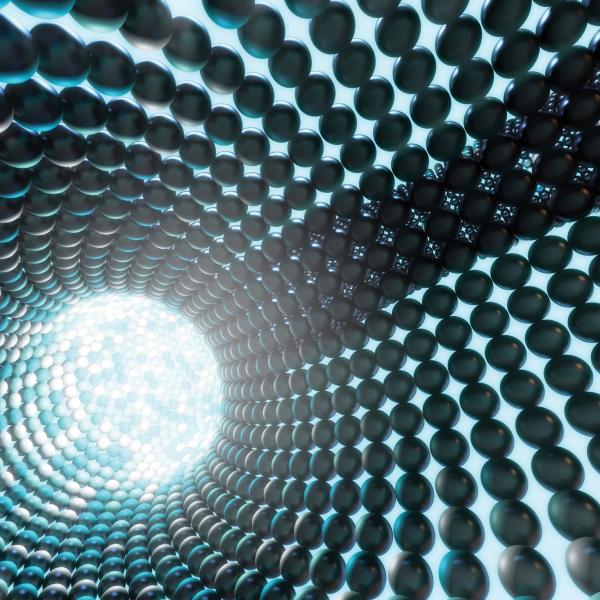
Emu - High-Resolution Backscattering Spectrometer
The EMU back-scattering spectrometer will be our fourth spectrometer, or instrument that can measure inelastic scattering, following the Taipan and Sika 3-axis spectrometers and our Pelican cold-neutron time-of flight spectrometer. Its distinctive feature is that it has much tighter energy resolution: between 1 and 30 μeV, as opposed to a minimum of 50 μeV or so on Pelican or Sika.

The physics in this range is typically that of diffusing water molecules or yet larger molecules like polymers or biological molecules. In addition, one can see the quantum-mechanical tunnelling between equivalent orientations of molecular groups. For instance a CH3- methyl group can typically rotate freely at high temperatures, but at low temperature it locks in to one of three equivalent states.
But, by quantum physics, it can still tunnel from one state to another. This effect manifests itself as an energy splitting, and by measuring the energies and intensities of the resultant spectral features, one can determine the strengths of all the relevant interactions (the Hamiltonian in the Schrödinger Equation) at the microscopic level.
The instrument itself is a very specialised 3-axis spectrometer, like Taipan or Sika, in which the incident neutron energy is determined by back-scattering from a single crystal, and the final scattered energy is determined using a huge spherical array of crystals reflecting and focussing these neutrons back to sample position, behind which there is an array of detectors.
Typically, exact same crystal reflection (e.g. Silicon 111) is used for both monochromator and analyser, and the energy scan is conducted by moving the monochromator backwards and forwards at high speed. This results in a Doppler shift to the incident neutron energy (analogous the red-shift of light in astronomy), sufficient to reach ± 30 μeV. This method was originally developed by Bert Alefeld and Tony Heidemann in 1969 in Munich, Germany.
Our EMU instrument views the cold neutron source, on the existing CG3 cold guide, and it is similar to the IN16 backscattering spectrometer at the Institute Laue Langevin, or the HFBS or SPHERES instruments at NIST and FRM-II respectively.
It opens up a new energy window to the Australian research community, one that cannot easily be accessed with X-ray or optical spectroscopy, though some of the same physics or chemistry can sometimes be tackled with NMR of muon-spin resonance.
Emu is funded as part of the Australian Governments Super-Science Initiative. Its conceptual design was completed in early 2010.
Instrument Advisory Committee
Members
Adam Best (CSIRO Energy Technology) - spokesperson
Moeava Tehei (University of Wollongong) - spokesperson
Mark Biggs (University of Adelaide)
Craig Buckley (Curtin University of Technology)
Mark Ridgway (Australian National University)
John Stride (UNSW)
Clemens Ulrich (UNSW)
John White (Australian National University)
Tim White (Australian National University)
Stefan Adams (National University of Singapore)




